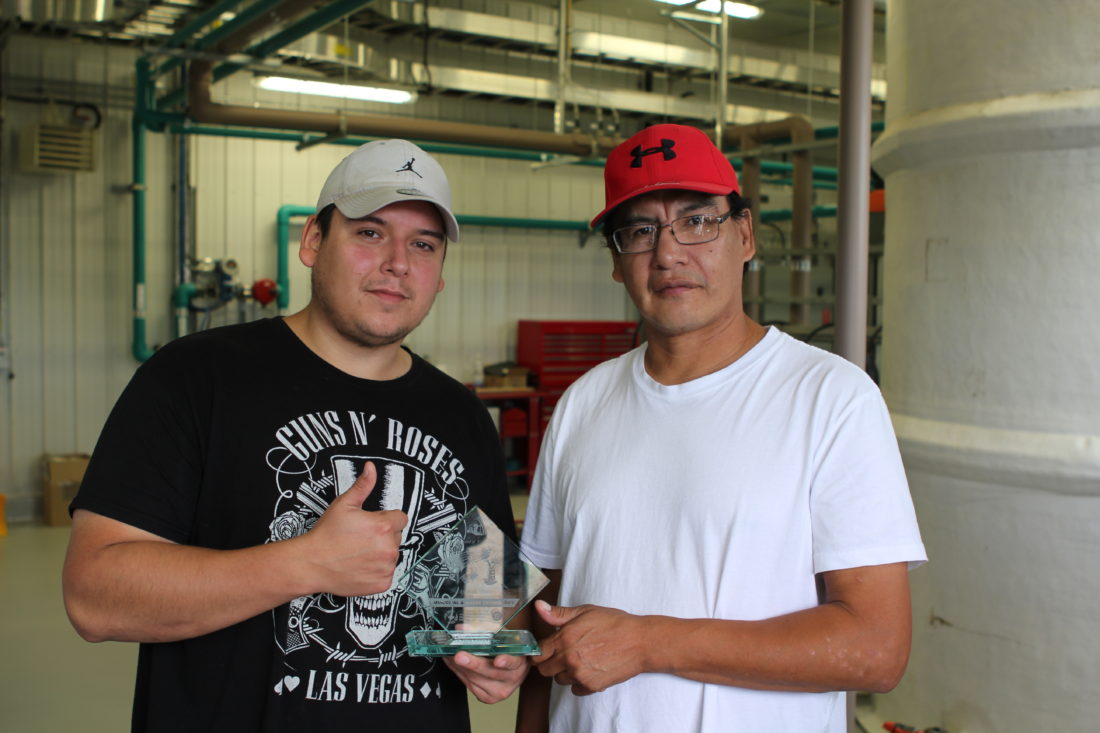Celebrating clean drinking water in Pauingassi First Nation

September 13, 2018
Treaty One Territory, Manitoba
alexpapineau
Pauingassi First Nation is one of the most remote First Nations in Manitoba. Although it is only 280 kilometres northeast of Winnipeg, there is no road into the community. For two months, the First Nation is accessible by winter road—that’s during a year with a cold winter. There is no airstrip/airport in or near the community.

An aerial shot near Pauingassi First Nation
“Pauingassi is very remote,” said the First Nation’s Chief Michael Owens. “I told some people about Pauingassi and how different it is from most communities. To our knowledge there are only two communities in Manitoba that are this isolated, without an airport.”
Grand Chief Arlen Dumas had the opportunity to travel to Pauingassi during World Water Week, which was at the end August. The week acts as a focal point to bring awareness on the globe’s water issues. The Grand Chief’s visit during this week was timely, as the community was celebrating the opening of its expanded water treatment plant.
For many years, Pauingassi First Nation has been under a Boil Water Advisory. The community lifted its long-term advisory in March 2018 following the expansion of the water treatment plant. Pauingassi is similar to many other First Nations that are unable to drink their water. According to a Government of Canada website, there are 10 Boil Water Advisories in First Nations in Manitoba and one Do Not Consume order.
“Pauingassi First Nation will finally have the infrastructure in place to remove the boil water advisory that our First Nation has had in place for over a decade,” stated Chief Michael Owens. “This infrastructure will not only provide clean drinking water for our people but eliminate the discharge of untreated sewage into our lake.”
The Government of Canada invested $13.3 million in a water treatment plant for the First Nation and an additional $12.9 million in a new wastewater lagoon, which is under construction. It is expected to be completed by December 2018.

Elders attending the ribbon-cutting ceremony in Pauingassi
Pauingassi needs an airstrip
“It’s an honour to be here today,” stated Grand Chief Dumas during his tour of the First Nation. “I come from a remote and isolated community as well but the difference is that at least we have a railway.”
“When people get sick they have to go by boat over rapids, they have to take them on a skidoo [in winter]. These are kids, Elders,” stated Chief Owens. “Most people do not have an idea of what we mean when we say we live in a remote community. This community is in dire need of an airport.”
“I want to see that airport,” said Grand Chief Dumas. “Some community members have died when they have had to be medevac’d out of the community. This is unacceptable. As Grand Chief I’m going to stand by your Chief and Council. When I was a health director there were communiqués saying that the health staff could not travel the way that the people of Pauingassi have to travel. I want to see advancement on that airport issue.”
Leadership shares concerns and ideas for moving forward

Grand Chief Dumas visits the Pauingass nursing station with Chief Owens
Four years ago when Chief Owens was elected, the First Nation wanted to build homes, provide clean drinking water, build a sewage system, and move away from co-management of their fiscal resources. They have achieved all of those things over the last four years.
There are a number of project that remain outstanding today as the First Nation needs an airport, school infrastructure, a new recreation centre, and renovations on their health centre—health programs and services are currently spread between three buildings.
Chief Owens took Grand Chief Dumas and federal government officials on a tour of Pauingassi. Visitors were surprised and saddened to see the condition of one building that houses important health programs such as the Aboriginal Diabetes Initiative. They learned that the First Nation school only offers classes up to grade nine—for students to continue with their education, they need to move to an urban centre and live with a foster parent/family while they finish grade 12.
In addition to the tour of the community’s infrastructure, Chief Owens took his visitors to the local landfill site. It is very close to the main reserve. Upon driving into the landfill, visitors could spot nearly 10 black bears rummaging through refrigerators that had been disposed of following this spring’s wild fires. For weeks, the homes in Pauingassi were without electricity—this means that all contents of the fridges and freezers spoiled. The bears are also a concern for the community. For now they appear content to rummage in the discarded appliances, but they could soon move to other parts of the First Nation.
Despite the obstacles and challenges, it is very evident that the leadership of Pauingassi are committed to making change in their community in a variety of ways.
“The people of Pauingassi have shown me how proud and strong they are, ” said the Grand Chief before leaving the First Nation. “I look forward to continuing to work closely with Pauingassi’s Chief and Council to ensure that this beautiful community receives the infrastructure it needs to succeed.”

Grand Chief Dumas and Pauingassi Councillor Moses Owens tour the water treatment plant